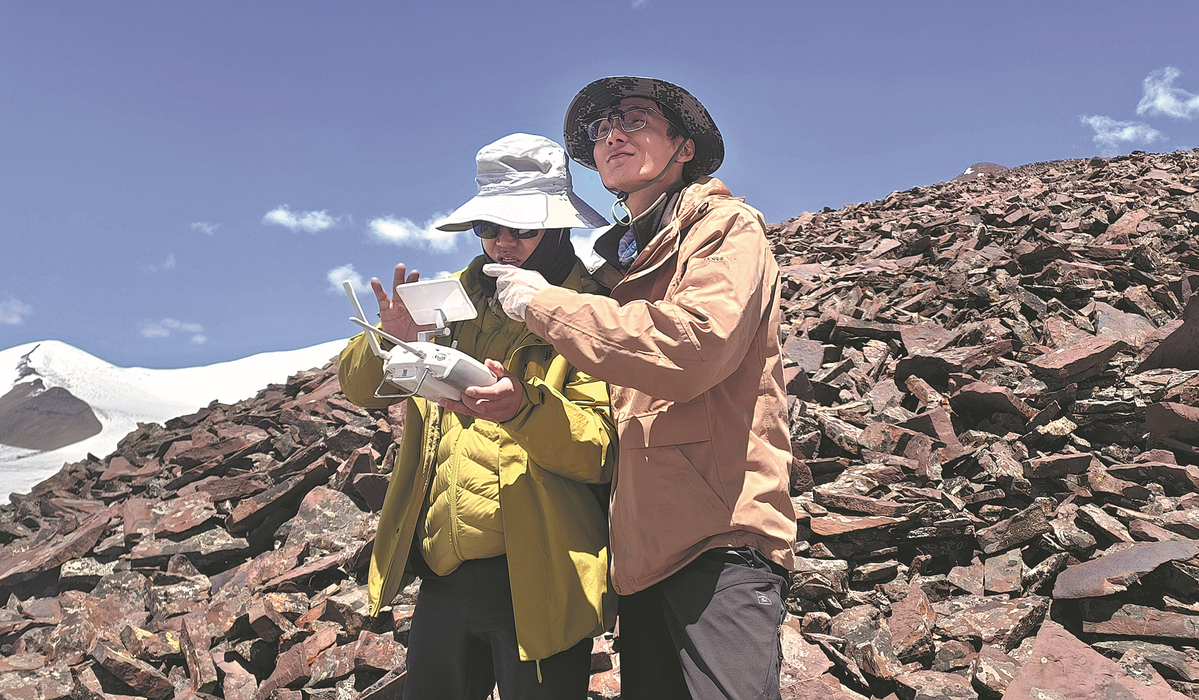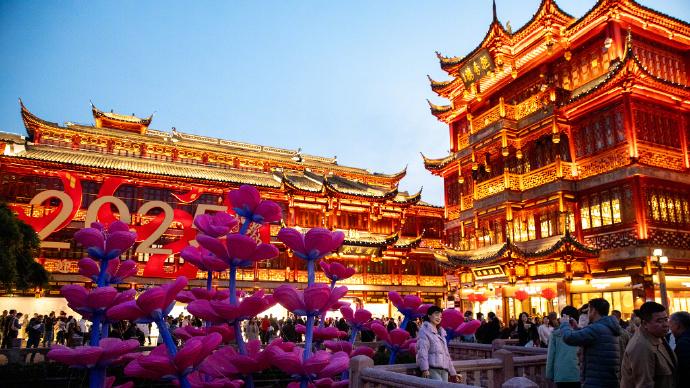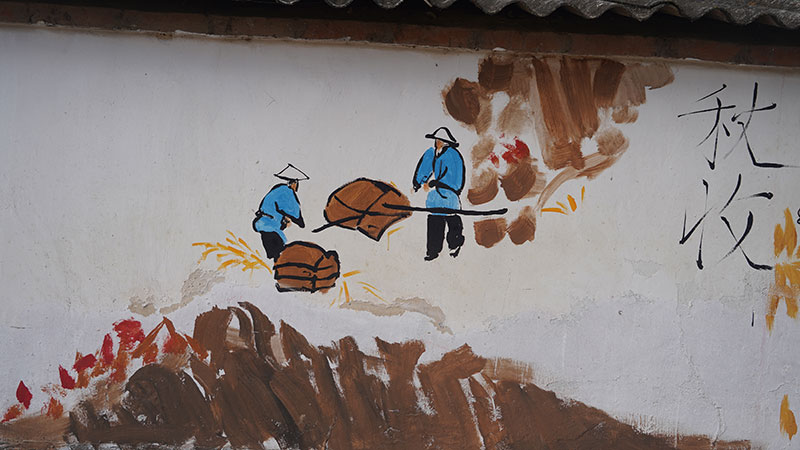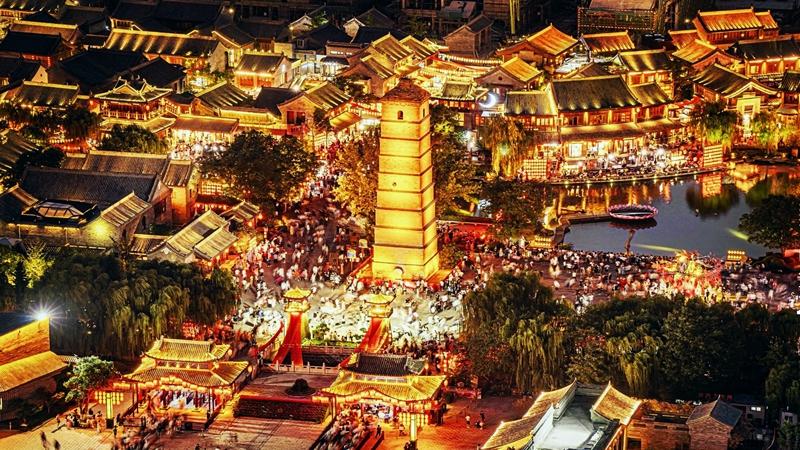Nagchu champions glacier protection on plateau
Editor's note: As protection of the planet's flora, fauna and resources becomes increasingly important, China Daily is publishing a series of stories to illustrate the country's commitment to safeguarding the natural world.

Xu Qiangqiang, an assistant researcher at the China Academy of Sciences' Northwest Institute of Eco-Environment and Resources, measures the size of the Dongkemadi Glacier using a laser radar in Nagchu, Xizang autonomous region, in October. (Palden Nyima/China Daily)
Nagchu city, in the northern part of the Xizang autonomous region, is the origin of many major rivers in Asia, including the Yangtze, the Nujiang and the Lancang rivers, making it a core area for building a water ecological security barrier in Xizang and a strategic guarantee base for water resources in China.
With joint efforts made by the government and the public in Nagchu, Xizang's largest and the country's second-largest prefecture-level area, the city reflects a beautiful picture of harmonious coexistence between humans and nature.
The Yangtze River's main source is the Jangchu Diruk Glacier in the Amdo section of the Three-River-Source National Park. To protect the ecological environment of the river source area, a regular working mechanism has been established by the local government and residents. Currently, the construction work in the Northern Tanggula Mountains area of the park, where the glacier is located, is 90 percent complete.
Nagchu has effectively shouldered the political responsibility for the ecological protection of the river park. It has promoted the construction of the Northern Tanggula Mountain area, implemented ecological protection and restoration in the source areas of rivers, and comprehensively established protective measures for river sources, among many other duties
Hu Chunyu, deputy head of the Nagchu water conservancy bureau, said the primary measures Nagchu has taken to protect the river are the implementation of a strict water management system, controlling total water usage, and ensuring efficiency.
Hu said the city has also cracked down on activities that encroach on river and lake areas, including sand mining, garbage dumping, and unauthorized construction, and has widely promoted ecological protection through educational campaigns to raise public awareness.
"Through governance, illegal activities that harm water ecology have been effectively curbed, leading to a significant improvement in the water quality of rivers and lakes," said Hu, adding the city has laid a good foundation for creating an ecological civilization, but it still faces some difficulties and shortcomings.
Ecological civilization is a concept promoted by China's central leadership for balanced and sustainable development that features harmonious coexistence between humanity and nature.
"The water quality management system in Nagchu is not yet perfect. Soil erosion is severe, and effective wetland protection and restoration measures are lacking," Hu said.
"This year, the measures we have taken mainly focus on strengthening supervision and law enforcement, establishing a sound water environment monitoring system and intensifying the overall monitoring and evaluation of the water environment," he added.
According to the Xizang Department of Natural Resources, the glacier resources in Nagchu cover approximately 6,800 square kilometers, almost 2 percent of its administrative area.
The general volume of water in the glaciers stands at about 8.8 billion cubic meters.

Scientists check video footage taken by a drone during an aerial survey of glaciers in Nagchu in August. (Palden Nyima/China Daily)
Painstaking efforts
As central and regional authorities attach increasingly greater importance to the glaciers, Nagchu may realize a more improved ecological aquatic environment.
Over the past few decades, Chinese researchers have been strictly monitoring the changes in the glaciers on the Qinghai-Tibet Plateau, and they work together with the local government to resolve environmental issues such as glacier melting.
Since its establishment in 2005, researchers at the Tanggula Mountain Cryosphere and Environment Observation and Research Station of the Xizang Autonomous Region, part of the China Academy of Sciences' Northwest Institute of Eco-Environment and Resources, have been working hard in the icy environment, walking on glaciers and in snowfields at an altitude of over 5,500 meters.
They conduct long-term observations and make continuous recordings of the geological, hydrological, meteorological, and permafrost conditions in the source area of the Yangtze.
Xu Qiangqiang, an assistant researcher at the institute, said his team has regularly conducted comprehensive assessments and health checkups of the glaciers in the area using advanced observation and mapping techniques in Nagchu over the past few years.
Xu said Nagchu is implementing an integrated protection strategy, adhering to the systematic management of mountains, waters, forests, fields, lakes, grasslands, sands, and ice.
"The approach of prioritizing natural restoration and combining natural recovery with artificial restoration in the system management has proved to be very effective. They are upholding ecological protection redlines, including large ice caps and small-scale glacier clusters, and designating them within the ecological protection red line," he said.
Xu also said for important snowcapped glaciers, they are implementing protection measures to curb human disturbances.
"Additionally, Nagchu is restricting tourism and mountaineering activities in certain glacier areas such as the Ganglung Changmar Glacier," he added. "Aside from necessary scientific research and resource surveys, all tourism activities are prohibited, and checkpoints have been set up on roads leading to the glaciers to advise tourists to turn back."
According to Xu, there are about 200,000 glaciers worldwide, with the largest located on the Qinghai-Tibet Plateau, which has roughly 100,000 glaciers.

A stele that says "Yangtze River's first drop of water" sits near the Jangchu Diruk Glacier in Amdo county of Nagchu, Xizang autonomous region. (Palden Nyima/China Daily)
Knowledge to share
"The Qinghai-Tibet Plateau is known as the water tower of Asia, because the melting ice feeds the major rivers in South Asia and Southeast Asia. If these glaciers continue to shrink, the upstream regions will face water shortages," said Xu, adding this will have a significant impact on downstream areas, including water for hydroelectric power stations, residential use, and farm irrigation.
Xu noted that the methods used by the Chinese government to protect the nation's waters are worth sharing with the rest of the world, and he outlined four specific points.
First, China is a global leader in emissions reductions and green energy, and is committed to achieving carbon neutrality. Second, scientists and local agencies are collaborating to artificially increase snowfall to replenish glaciers and reduce losses. Third, China has been restoring grasslands for many years to improve the surrounding ecological environment of glaciers because grasslands reduce the impact of light-absorbing impurities as glaciers melt. Finally, the country is carefully managing the development of glacier tourism, recognizing the importance of water protection and implementing restrictions as needed.
In a move to protect glaciers in Xizang, the region's legislature adopted a law dedicated to the effort in late July.
The law, which took effect on Oct 1, provides specific guidelines for governments and relevant departments in glacier areas. It introduced a responsibility system and performance evaluation mechanism for glacier protection goals, and established punitive measures for violations.
"The regulation will effectively protect glacier resources, ensure the ecological safety of the Qinghai-Tibet Plateau, and contribute to the preservation of the plateau's flora, fauna, and landscapes," said Zhao Guiying, deputy director of the Legislative Affairs Commission of the Standing Committee of the People's Congress of Xizang.

Streams from the Jangchu Diruk Glacier area join to become the source water of the Yangtze River. (Kunga Lesang/China News Service)
Xinhua contributed to the story.
Photos
Related Stories
- China's Xizang sees robust foreign trade growth
- New expressway links Lhasa with birthplace of Tibetan civilization
- Modern technologies safeguard Potala Palace's timeless beauty
- Xizang to deliver green electricity to Beijing for the first time, with an initial transaction volume at 15 million kWh
- Mount Qomolangma sees record number of tourists
Copyright © 2024 People's Daily Online. All Rights Reserved.









